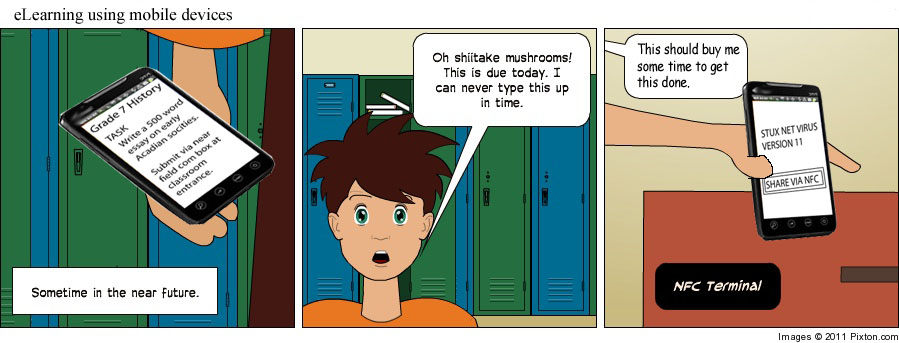Preface: For the benefit of the reader, I will assume that eLearning and mLearning are interchangeable. I could hypothesis that mLearning, when it becomes a constant, will be annexed into the eLearning umbrella, rather than the opposite happening.
Small is small. There is no getting around that. Even 20 Fingers had an issue with things that are small. Yet, that is what we use every day. Mobile devices (for the case of this paper, are those that can be tucked easily into the front pocket of a pair of pants) usually sprout screen sizes of 3.5 to 4.5 inches. Within these inches are the pixels to which our eyes are glued to. It is of no surprise then, that educational institutions and educators have been (and are) active in looking at ways to incorporate these devices/smart phones/personal digital assistants into the learning process. Integration like this is not easy. The end user (student) and content developer (instructor) are forced to circumnavigate options surrounding various platforms/operating systems, input methods, screen resolution and application support. The BYOD day might just better off be a BYOB day, as the IT department struggles to accommodate the swath of hardware and software used on various devices by a range of experienced users.
Accepting Truths about eLearning and Mobile Devices
Genius doesn’t work on an assembly line basis. You can’t simply say, “Today I will be brilliant.”
— Kirk, “The Ultimate Computer”, stardate 4731.3
Today, most students and educators should understand some of the limitations that mobile devices present. It has little to do with the device itself, but more with how the user interacts with his/her device. Both student and educator should recognize that they are using a tool. This tool cannot make a student smarter, but it can allow them to access information more efficiently. The screen, the medium of delivery itself, becomes the most important part of this tool. For most devices, it acts as the display, the navigation and the input. Given its average size, the screen is both a blessing and a curse. On the positive, it is easily transportable. It generally provides a day’s worth of interaction. It is vibrant (but not always sun friendly). To all these perks, it still suffers from real estate issues. Content has to be appropriately developed for these devices in terms of both what the user will be seeing and how long they will want to interact with it. Educators are forced to push content that is simplified in both media and the length of text. From my own experience, constant scrolling on the touch screen leads to, “where is the end of this?” Applications, or apps, that are geared to educational content distribution, seem to be a fix for the previously web based delivery methods of Learning/Course/Content Management Systems. Ironically, these apps do not solve the problem. Taking what would be on the web and making it mobile friendly does little for the end user – back to the issue of size and scrolling pages. The real push for eLearning through mobile devices is to take advantage of what students use them most for, texting or communicating. When the U.S. National Endowment for the Arts (2007) discovered that only 7-10 minutes a day is spent on voluntary reading by those ages 17-24 years old and that same age group sends and receives on average 3500 texts a month, you get a picture of what eLearning content developers should be moving toward. Community and cooperative learning, from my perspective, would be the perfect match for eLearning through mobile device.
Summary
While eLearning through mobile devices is not ubiquitous, or transparently implemented, it is a medium that holds much potential. Educational content developers not only have to understand the limitations of a 3.5 inch device, they must also demonstrate forward thinking in realizing that the nature of reading and communicating is changing in light of these devices.
References
National Endowment for the Arts (2007). To Read or Not to Read – A Question of National Consequence. Retrieved on October 1 2011, from http://www.nea.gov/research/ToRead_ExecSum.pdf

